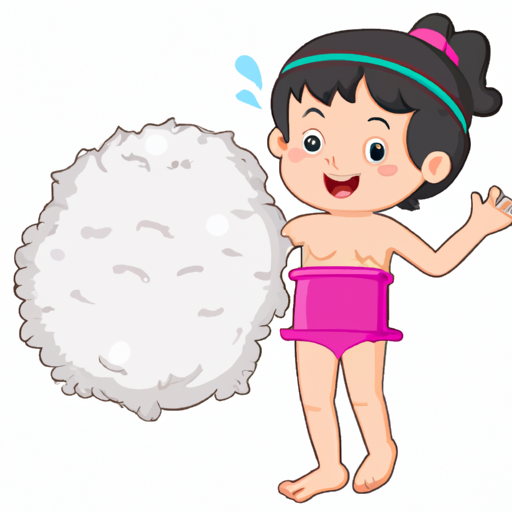Introduction
In our fast-paced lives, finding moments of rest and self-care have become essential to maintaining our well-being. One such rejuvenating ritual that provides both physical and mental benefits is the loofah bath. Derived from the fibrous inner part of a tropical plant, loofahs have been used for centuries to exfoliate the skin and provide a soothing cleansing experience. In this article, we’ll delve deeper into the world of loofah baths, exploring their history, benefits, and tips for a truly refreshing experience.

Q. What is loofah bath
Ans : A loofah bath is a bathing ritual that involves using a loofah, which is a natural fibrous material derived from the interior of a tropical plant, to cleanse and exfoliate the skin. During a loofah bath, individuals gently scrub their skin with the loofah, often in combination with a mild body wash or soap, to remove dead skin cells, dirt, and impurities. This process helps to reveal smoother, healthier skin and can provide a soothing and invigorating bathing experience.
The practice of a loofah bath has been embraced for its numerous benefits, which include exfoliation, improved blood circulation, deep cleansing, stress relief, and enhanced absorption of skincare products. The loofah’s unique texture makes it an effective tool for sloughing off dead skin cells and promoting a refreshed appearance.
To enjoy a loofah bath, one typically begins by wetting the loofah and their skin with warm water to soften the fibers. Then, a mild cleanser is applied to the loofah, and gentle circular motions are used to scrub the body, paying particular attention to areas with rough or dry skin. After thoroughly exfoliating, the body is rinsed clean, and moisturizers are often applied to lock in hydration.
Overall, a loofah bath offers both physical and mental benefits, making it a cherished self-care ritual for those seeking to enhance their skin’s health and indulge in a relaxing bathing experience.
History of the loofah
Loofah, also known as loofah or sponge gourd, has a rich history that dates back to ancient civilizations. Originally cultivated in Egypt, the loofah was prized for its natural cleansing properties and used by various cultures around the world. The fibrous network of the plant made it an ideal tool for scrubbing away dirt and dead skin, resulting in smoother and healthier skin. Over time, the loofah found its way into various bathing rituals, becoming an integral part of beauty and self-care routines.
Benefits of loofah bath
- Exfoliation: One of the primary benefits of using a loofah in your bathing routine is exfoliation. Regular exfoliation can improve skin texture and promote a youthful glow.
- Increase circulation: Light massage of the loofah stimulates blood circulation in the skin. Improved circulation brings essential nutrients to the surface of the skin, enhancing its overall health and appearance.
- Deep Cleansing: The porous structure of the loofah allows it to effectively remove dirt, oil and impurities from the surface of the skin. This deep cleansing action can help prevent clogged pores and acne, promoting clearer skin.
- Stress relief: Using a loofah in your bath routine can be therapeutic. A combination of warm water, soothing soap, and gentle scrubbing motions can help relax tense muscles and ease tension.
- Better Product Absorption: Exfoliated skin is more receptive to skin care products. After a loofah bath, moisturizers, lotions, and serums can penetrate the skin more effectively, maximizing their benefits.
Tips for a Comfortable Loofah Bath
Preparing your loofah:
Before using a new loofah, soak it in warm water to soften the fibers and make it more pliable. This ensures gentle yet effective exfoliation.
Temperature matters:
Fill your bathroom with comfortably warm water. Avoid very hot water, as it can strip the skin of its natural oils and cause dryness.
Choose the right cleanser:
Choose a mild, nourishing body wash or soap. Harsh chemicals can irritate freshly exfoliated skin.
Gentle Scrubbing:
Use gentle, circular motions when scrubbing your body with the loofah. Avoid excessive pressure, as this may irritate the skin.
Focus on rough areas:
Pay special attention to areas with rough skin, such as elbows, knees, and heels. These areas may benefit from a slightly harsher scrub.
Rinse thoroughly:
After a loofah bath, be sure to wash your body thoroughly to remove any soap residue. Use moisturizer to maintain hydration.
Conclusion
Loofah baths provide a simple yet wonderful way to pamper yourself and enhance the health of your skin. With its historical significance and myriad benefits, this timeless beauty tool continues to be an essential part of self-care routines around the world. By incorporating a loofah into your bathing ritual, you can enjoy smooth, refreshed skin and moments of relaxation that rejuvenate both body and mind.
Commonly Asked Queries:……
2. How does a loofah work?
Loofah’s texture scrubs away dead skin cells and promotes better circulation.
3. What are the benefits of a loofah bath?
Benefits include exfoliation, improved circulation, deep cleansing, stress relief, and better skincare product absorption.
4. Can anyone use a loofah?
Generally yes, but sensitive skin types should be cautious. Consult a dermatologist for skin concerns.
5. How often should I use a loofah?
2-3 times a week is recommended for most skin types.
6. Can I use a loofah on my face?
No, it’s better to avoid using a loofah on your face due to its delicate skin.
7. How do I clean and care for a loofah?
Rinse well and hang in a dry area to prevent bacteria growth. Replace regularly.
8. What soap should I use with a loofah?
Use a mild, skin-friendly soap or body wash.
9. Any precautions when using a loofah?
Be gentle to avoid skin irritation. Stop if discomfort occurs.
10. Can I use a loofah with sensitive skin?
Use a soft loofah or consider alternative exfoliation methods for sensitive skin.

2 thoughts on “Revitalize Your Skin and Senses: The Art of Indulgent Loofah Baths”